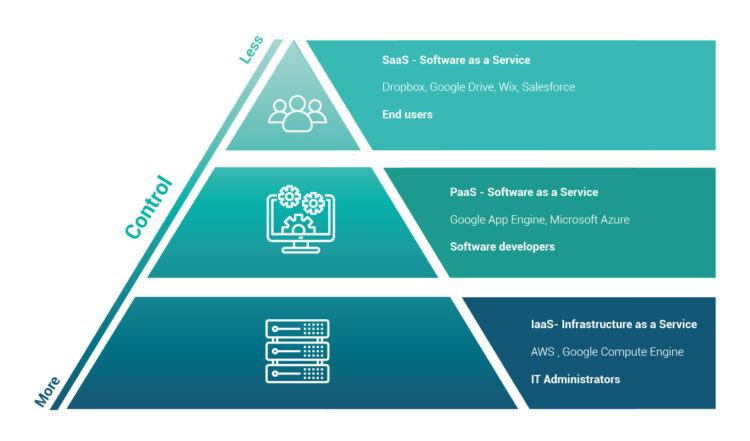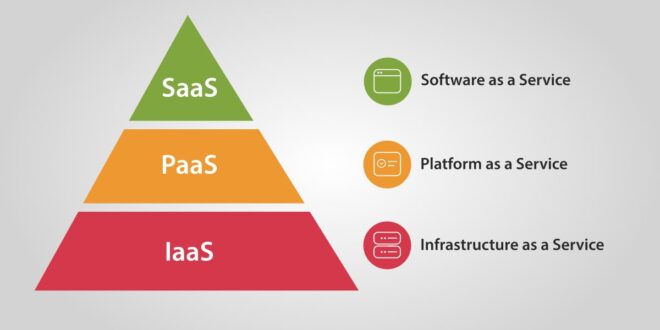Companies do not always have enough computing resources for their tasks, and buying additional equipment is a lot of money. Or you need to assemble and configure a system for developing applications, but there is no time for this.
Cloud service models SaaS PaaS IaaS from ishosting.com help solve these and other IT problems. In this article, you will also understand what is SaaS PaaS, and IaaS in cloud computing, types of cloud services IaaS PaaS SaaS, and examples of PaaS SaaS and IaaS.
In this article, we will tell you what is PaaS SaaS, and IaaS, and what the principle of their operation is, and we will advise you on how to choose the right SaaS IaaS PaaS option for your company.
Types of Cloud Services

IaaS PaaS and SaaS clouds can be divided by the way the infrastructure is built (by deployment model) and by the type of service delivery (by the service model). Let’s look at the service model category in detail.
IaaS
IaaS (Infrastructure-as-a-Service) is “infrastructure as a service”. A cloud provider offers its computing power to other organizations: servers, storage, or networks. You connect to other people’s resources and use them – the provider has already collected everything for you.
SaaS
SaaS (Software-as-a-Service) is a software-as-a-service. This category includes the vast majority of cloud services: email, corporate portals, task schedulers, social networks, CRM systems, etc.
When using SaaS, you do not need to pay for a software license, install service, or update and maintain the system. However, you need to pay the rent of the cloud itself, if it is paid.
PaaS
PaaS (Platform-as-a-Service) is “platform as a service”. If with an IaaS solution, you use the resources of a provider, then with PaaS you will also have a customized platform with the necessary tools: for example, a database management system or a machine learning environment.
PaaS features are limited: you cannot change the settings of the operating system and virtual servers. From the provider, you get already set parameters.
When to Use IaaS SaaS PaaS?

Use IaaS if your company needs:
- Save on infrastructure. To maintain servers on your own, you will need to pay rent, and purchase hardware, and software licenses – these are big expenses. If you do not plan to make money on your own data center and there are no specialists in this field among your employees, then it is better to use a ready-made infrastructure in the cloud.
- Work with Big Data. IaaS withstands heavy loads and is combined with business intelligence tools. This allows you to predict trends and create innovative products.
- Increase computing power. You can always change the hardware or software depending on the needs of the organization.
Use PaaS if your company needs:
- Transfer databases. You will have a ready-made data management system. The provider company will be responsible for the quality of work and backup.
- Build applications in containers. All components for running applications are already contained in special virtual containers.
- Process arrays of information. You will receive cloud-based tools for analyzing the data your company has collected. The necessary settings are already set, you just have to choose the appropriate configuration.
Use SaaS if your company needs:
- Reduce software installation time. You don’t have to install programs on each computer and worry about updates.
- Share databases, applications, and services. Suitable for organizations that need remote employee access to corporate files.
We hope you are now sure about the SaaS PaaS IaaS meaning, which cloud computing PaaS SaaS model to choose, and how each of them can help you.
 Hi Boox Popular Magazine 2024
Hi Boox Popular Magazine 2024



